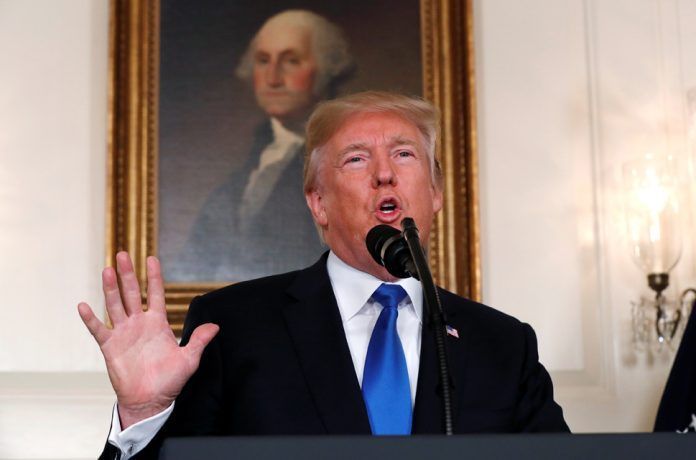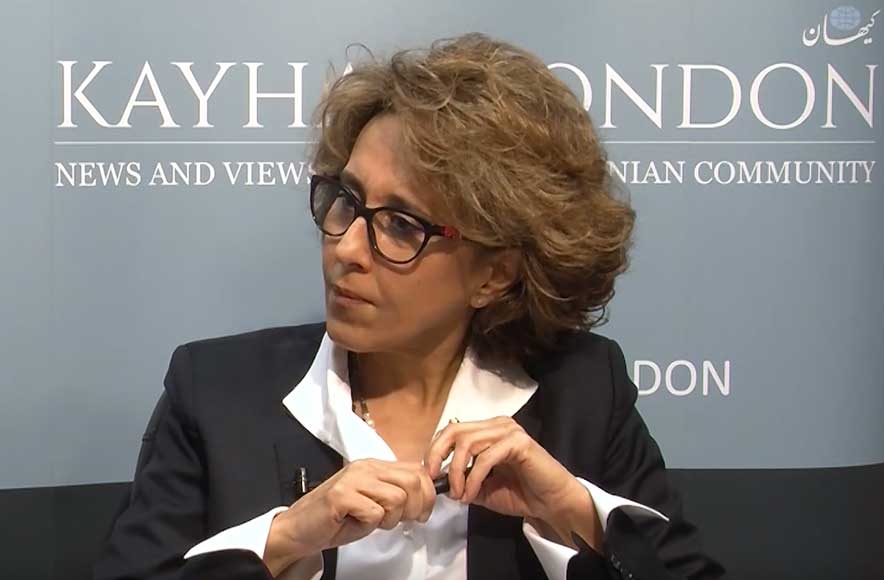
By Nazenin Ansari
December 03, 2017 On 27th November, the Conservative Middle East Council (CMEC) hosted a wide-ranging discussion on the future of the Iran Nuclear deal at the House of Commons. Chaired by Richard Bacon MP, Chairman of the All Party Parliamentary Group on Iran, speakers included Con Coughlin, the Telegraph’s Defence Editor and Chief Foreign Affairs columnist and Nazenin Ansari, Managing Editor of Kayhan London.

CMEC was founded in 1980 with the aim of informing Parliamentarians and promoting their understanding of the complexities of the Middle East through orgnaising country visits as well as discussions with leading experts. Below are remarks delivered by Nazenin Ansari.
Good Evening.
I thank CMEC for inviting me to join the panel the today.
My presentation will focus on the situation inside Iran and its reverberations for JCPOA.
The JCPOA was published at a time when the sanctions against Iran had crippled the Iranian economy. In 2013, Iran had a negative 6.8 percent growth, whilst China and Russia were increasing their hold of the Iranian market, at the expense of the European countries and the US.
Talks between the US and the Islamic Republic had begun in earnest towards the end the second term of George W Bush and President Ahmadinejad’s term in office. Resolving the nuclear issue became a focal point for both President Obama’s administration as well as that of President Rouhani, who had won office on the promise of removal of international sanctions against Iran and fully reconnecting it to the international financial system.
In a way JCPOA was heralded as a win-win situation for the Islamic Republic, the international community as well as the people of Iran.
We should also note that public debate within Iran in respect of nuclear energy had been prohibited since 2005. After the publication of JCPOA a degree of debate was allowed as a way to garner support for its publication by the Rouhani administration.
Questions which the media in Iran had been been warned off since 2005, included: the overall economic, environmental cost/benefit of the nuclear programme.
- Is having the capacity to produce nuclear energy an indicator for sustainable development?
- What is the cost of building each nuclear power plant?
- What is the cost compared to alternative forms of energy?
- What is the opportunity cost of Iran’s nuclear programme?
- What are the gains of Iran’s nuclear programme?
- To what degree does the use of nuclear energy have an environmental justification in Iran?
- Do disasters such as Chernobyl and Fukushima also threaten nuclear plants in Iran which is prone to earthquakes?
Notwithstanding, was the attention and concern of ordinary Iranians preoccupied by the right to have nuclear energy? No.
Did they yearn for improved economic conditions? Yes
Did they hope for Iran to be connected to the international system? Yes.
Accordingly, Iranians jubilated the publication of JCPOA.
However, complicating the situation from the Iranian side is the struggle between 2 mutually exclusive strategic outlooks with the Islamic Republic’s strategic and political decision makers.
For one camp Iran is a vehicle for an Islamic Revolution on a global scale; while for the other Iran is a country in need of sustainable development. Is Iran a cause or a country? Accordingly Iran and the Islamic Republic are mired in an existential struggle from within, which does not bode well for JCPOA.
Let’s look at two issues that crystallise these challenges: the case of Nazanin Zaghari-Ratcliffe and the recent earthquake in northwestern Iran, which was deadlier than the one that destroyed Mexico City, three months earlier.
- Nazanin was arrested by the intelligence agents of IRGC. Her criminalisation, unfair trial, sentence, inhuman confinement and lack of access to proper medical attention reflects the systemic failings of Islamic Republic’s political and judicial system.
- It also reveals the extent to which the state views journalism as a crime.
- Last month, the Iranian government began a criminal investigation into many of the journalists working for BBC Persian in London. Accusing them of conspiracy against the Iran’s national security, the judiciary has frozen the assets in Iran of more than 150 of them.Nazanin is also a dual-national.According to the 2001 Census, 42,494 Iranian-born people reside in the UK.
- This figure is thought to have risen to 86,000 by 2015, according to National Statistics estimates. It is believed that overall 150,000 Iranians currently live in the U.K.
- According to a recent report by Reuters, the IRGC intelligence has arrested at least 30 dual nationals since mostly on spying charges, 19 out of the 30, have citizenship in Europe.Detainees’ relatives and lawyers said the Guards were using them as bargaining chips.
- Among those detained are many who either previously worked with the Iranian government or were invited by the government to travel to Iran for consultation or conferences.
- One is Swedish-Iranian Ahmad Reza Jalali, a disaster medicine expert, threatened to face death penalty. He was visiting Tehran after being officially invited by Tehran University because of his work as a scientist at the Research Center in Emergency and Disaster Medicine (CRIMEDIN) run by the University of Eastern Piedmont in Novara, Italy, and the Free University Brussels (VUB). Ahmad Reza Jalali’s expertise is one which is highly needed in Iran, considering that the country sits on major earthquake fault lines.
- President Rouhani’s administration meanwhile has shown to be complacent in respect of the plight of the dual nationals. In a way they have willingly submitted to the will of the faction that have held them to ransom.
Kermanshah Earthquake 12 November
- The tremors of the earthquake in Kermanshah on 12 November, with a magnitude of 7.3, were felt as far away as Turkey, Israel, Lebanon and Pakistan.
- At least 30,000 homes in Iran were damaged and several villages completely destroyed.
- Worst hit included government-subsidized Mehr Housing Scheme, a key project of the Ahmadinejad-era. The scheme had been engulfed in accusations of corruption and defective construction.
- The Financial Times (FT) described the earthquake as a test of resources and capabilities for the government. Mr Rouhani’s government has scored negatively.Even the Supreme Leader criticised the government’s response.
- Millions of dollars have been donated by ordinary Iranians both inside the country and expatriates outside.Speaking to the FT Saeed Laylaz, a reform-minded analyst said,“This level of Iranians’ support for quake-hit people was certainly unprecedented and showed how people are angry at the massive corruption and inefficiency of the establishment.” He added, “People did not want to give one litre of mineral water to state organisations on fears that it could end up being 200 grams.”
Yet last week, the Chief Commander of the IRGC, Mohammad Ali Jafari declared on state TV that IRGC is ready to rebuild Syria. “Hezbollah must be armed to fight against the enemy of the Lebanese nation which is Israel. This issue is non-negotiable.”
For now, the Revolutionary cause remains the driving force in Iran today.
For how long more? That remains to be seen.
In a few years time, will we become aware of track 2 and track 3 talks taking place today? I would not be surprised.

